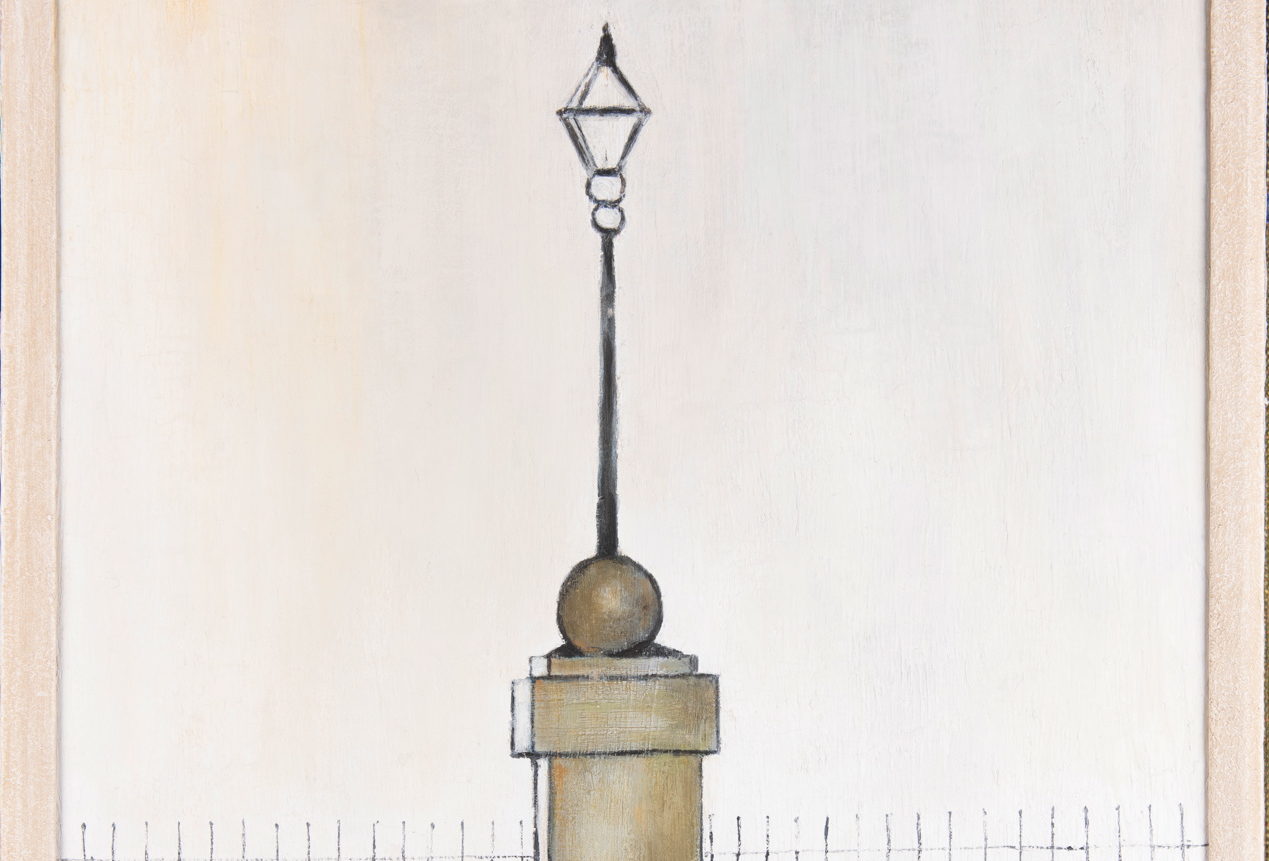In the frame:
Lowry's lamps
Richard Mayson writes about the Salford artist’s sense of place, depicted through one enduring motif throughout his body of work – lamp posts
When LS Lowry (1887-1976) came to public attention in the 1950s and 1960s, he was frequently photographed with a street lamp in the background. It was a mark of the urban setting; a symbol of the streets that he had traipsed around for over half a century and the predominantly urban art that he produced. He is known for his so called matchstick men but he observed everyday items of street furniture just as closely. They are incorporated into his paintings with the same judicious sense of artistic licence.
I have taken a particular interest in street furniture since early childhood and came to judge an urban work of art by the artist’s ability to portray a street lamp. It is a plain fact to me that, in art, there are good street lights and there are bad ones. Forever looking at street lights both in situ and in art, I recall looking at a Lowry and thinking that he really couldn’t do a good one. The enigmatic walking-stick lights and the elongated telegraph poles that he used in many of his large industrials seemed to have little or no relationship to anything that I had seen in our part of the world.
Mottram in Longdendale, a gritstone village on the edge of the Pennines, was home for me until my late teens. It was also Lowry’s home
for the latter years of his life. He was not greatly admired in Mottram, as word had spread that he intensely disliked the village. He rarely depicted the place in his pictures, though he did include residents of Mottram, often without them knowing. He once said of us: “They’re nice folk. I’ve nothing against them. It’s the place… it does nothing for me.”
Lowry didn’t do much for me either at the time. In the 1970s Lowry had become something of a cliché. Living where we did, you saw so many reproductions of Lowry’s industrial landscapes that it led you to wonder what the fuss was about. Mike Leigh used Lowry to just such an effect in his play Abigail’s Party (1977) when the estate agent, looking for cultural respectability, points out a Lowry print hanging on the living room wall and attempts to stimulate a conversation about it. The ensuing dialogue is all about “taste” and Leigh uses the Lowry reproduction to signal the cultural ambitions of someone who knows nothing about art.
At around the time of Lowry’s death in 1976 there was a creeping nostalgia for a past that was being eradicated. This was a time when the landmarks of the Industrial Revolution were rapidly disappearing. In the late 1960s the two-storey back-to-back houses on either side of Ashton Old Road and Hyde Road on the way into central Manchester were being steadily torn down. Some were replaced by forbidding pre-fab, pebble-dashed blocks quickly named Fort Beswick and Fort Ardwick by the locals. The giant mills that consumed and disgorged hundreds of workers every morning and evening were closing all around us and their rows of windows went permanently dark. Some of these had been built by my grandfather and great grandfather.
The people were changing along with the landscape. The lame, oddball and down-and-out characters that so fascinated Lowry in later life (his so called grotesques) were dying out. Gas lamps, like these people, were becoming a thing of the past, having nearly all been replaced by brutalist concrete lamp standards with the intense orange sodium lights that illuminated the cold gloom.
As I became more familiar with the breadth of his work I came to re-evaluate Lowry. There is so much more to see than those “matchstalk men and matchstalk cats and dogs” in the song that helped to popularise Lowry in the 1970s.
In my book Lowry’s Lamps I delve into some of the most under-appreciated aspects of his works. He was a master of observation and composition, and street furniture forms an important part of Lowry’s busy scenes. Some of these are akin to a theatrical set and lamp posts often have more than a walk-on part. As his work developed, lamps, telegraph poles and monuments became a subject in their own right.
Lowry stayed true to his northern roots. Talking to an art student at the Crane Kalman Gallery, in Manchester, the artist said: “I can’t think what you want to go to London for. You won’t find any better lampposts there… No sir, you can only paint where you belong – and that is where you were born.” With my lifelong passion for street lights, this is emblematic of Lowry’s strong sense of place.
Richard Mayson’s book Lowry’s Lamps is published by Unicorn at £20

Leave a reply
Your email address will not be published.